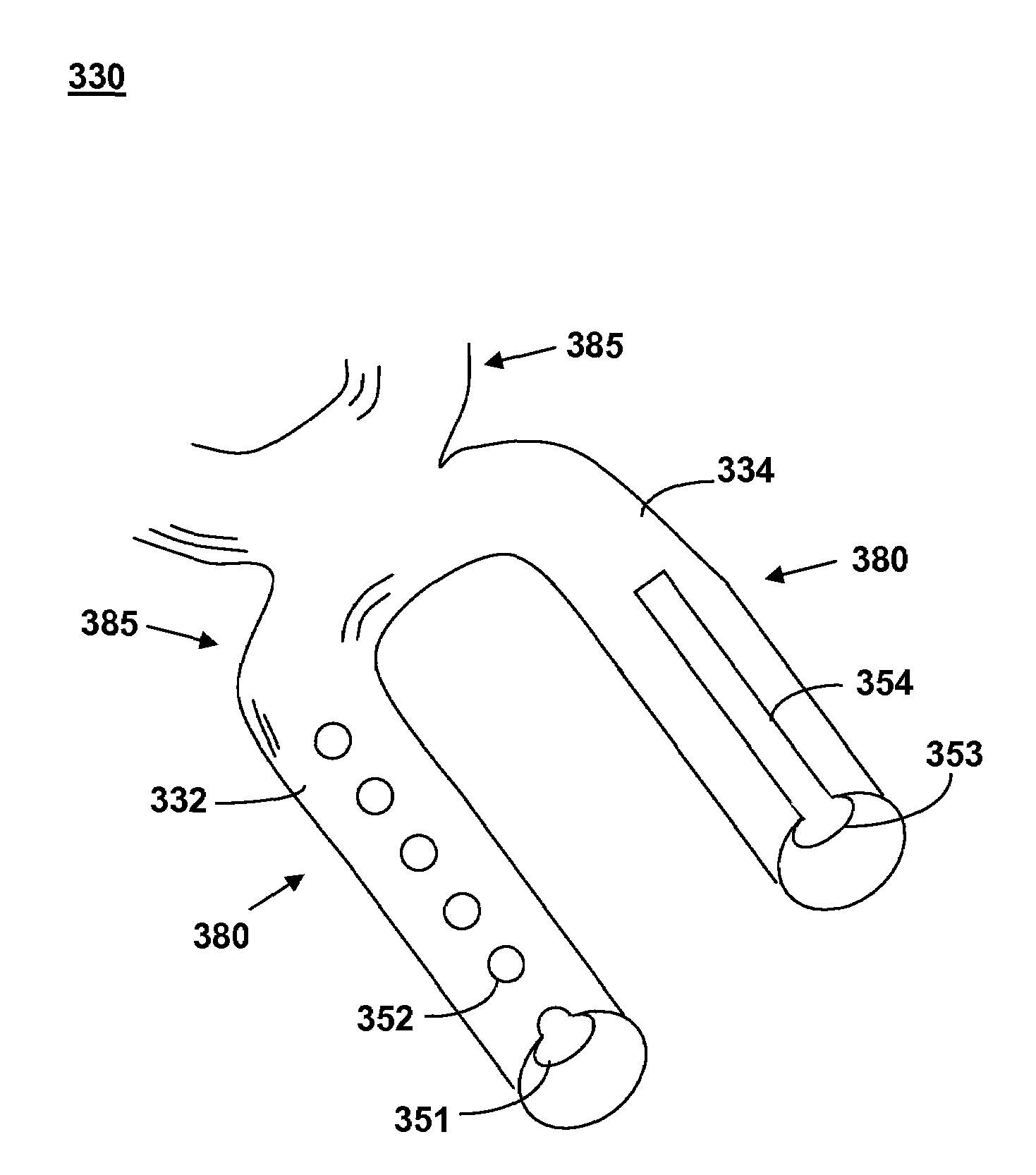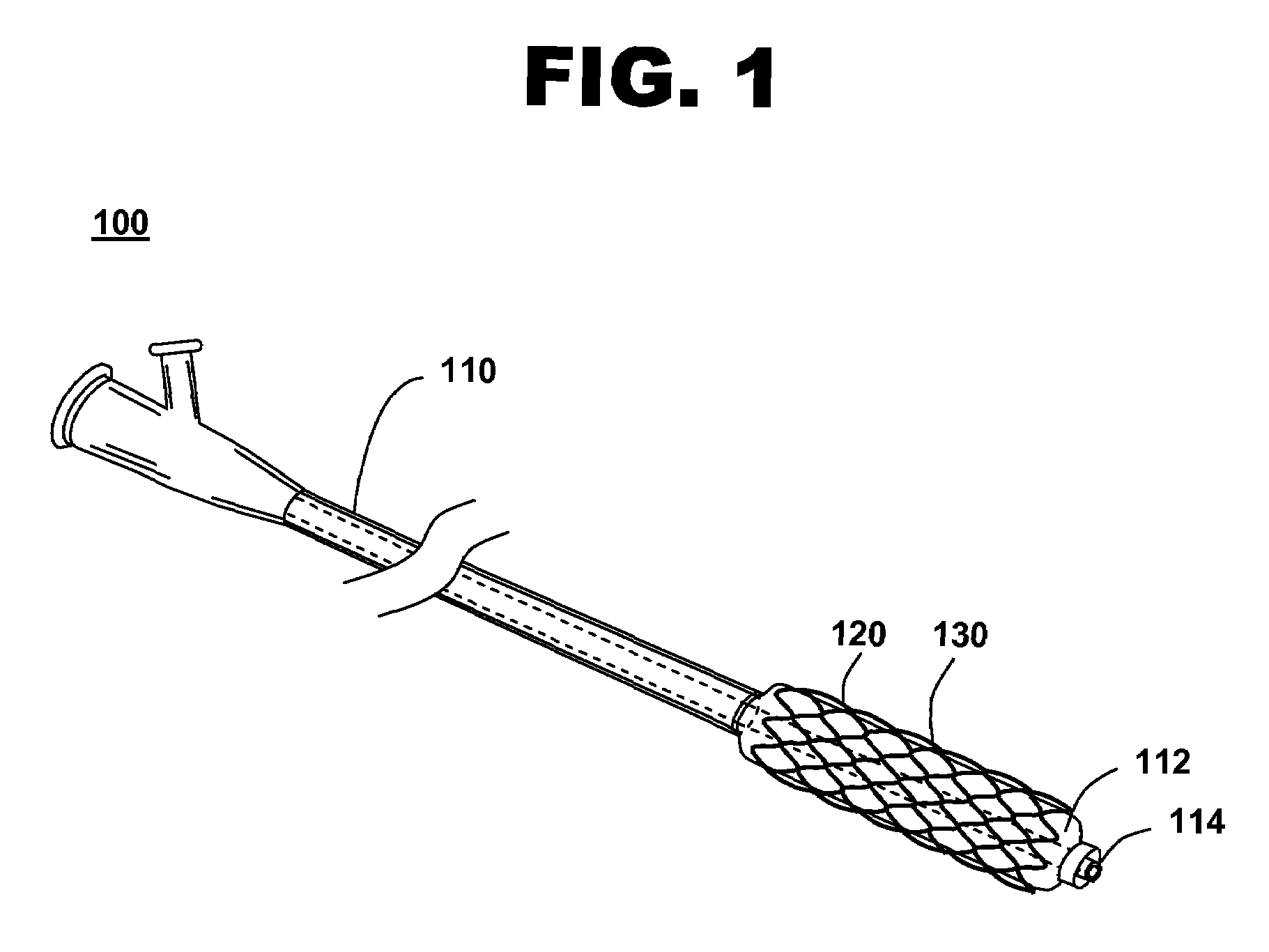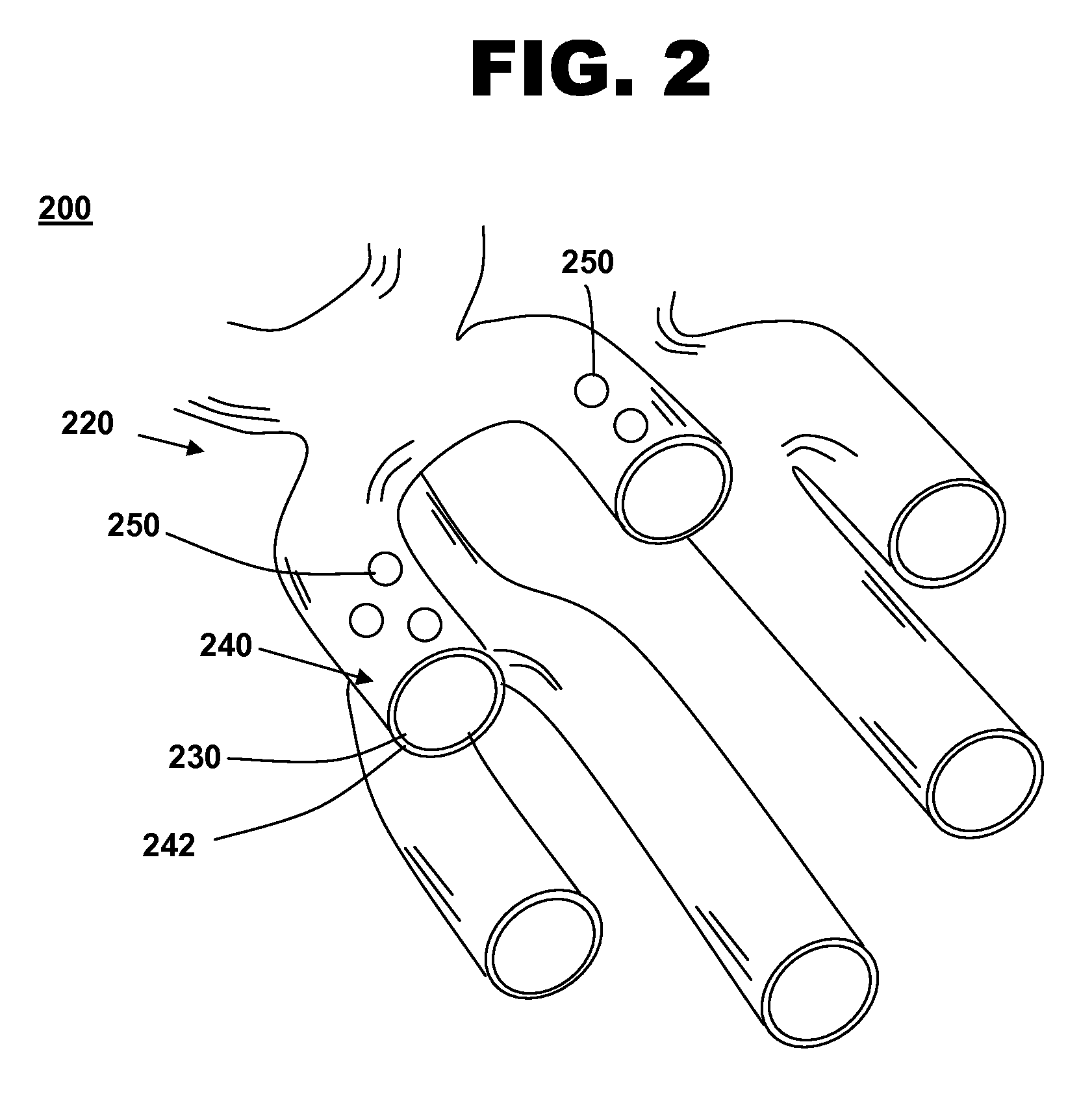Implantable device with reservoirs for increased drug loading
a technology of implantable devices and reservoirs, which is applied in the direction of prosthesis, extracellular fluid disorder, blood vessels, etc., can solve the problems of undesirable reactions, significant proportions of treated vessels re-narrowing or collapsing, and the current drug-loading and drug-delivery characteristics of the method of loading drugs onto the implantable device may be deficien
- Summary
- Abstract
- Description
- Claims
- Application Information
AI Technical Summary
Benefits of technology
Problems solved by technology
Method used
Image
Examples
Embodiment Construction
[0024]The invention will now be described by reference to the drawings wherein like numbers refer to like structures.
[0025]FIG. 1 shows an illustration of a system for treating a vascular condition, comprising a stent coupled to a catheter, in accordance with one embodiment of the present invention at 100. Stent with catheter 100 includes a stent 120 coupled to a delivery catheter 110. Stent 120 includes a stent framework 130. Stent framework 130 includes a plurality of drug reservoirs disposed within an outer surface of the stent framework. A therapeutic drug is disposed within the drug reservoirs. The drug reservoirs, in one embodiment, are pores. In another embodiment, the drug reservoirs are channels.
[0026]Insertion of stent 120 into a vessel in the body helps treat, for example, heart disease, various cardiovascular ailments, and other vascular conditions. Catheter-deployed stent 120 typically is used to treat one or more blockages, occlusions, stenoses, or diseased regions in ...
PUM
| Property | Measurement | Unit |
|---|---|---|
| thick | aaaaa | aaaaa |
| thick | aaaaa | aaaaa |
| thickness | aaaaa | aaaaa |
Abstract
Description
Claims
Application Information
 Login to View More
Login to View More - R&D
- Intellectual Property
- Life Sciences
- Materials
- Tech Scout
- Unparalleled Data Quality
- Higher Quality Content
- 60% Fewer Hallucinations
Browse by: Latest US Patents, China's latest patents, Technical Efficacy Thesaurus, Application Domain, Technology Topic, Popular Technical Reports.
© 2025 PatSnap. All rights reserved.Legal|Privacy policy|Modern Slavery Act Transparency Statement|Sitemap|About US| Contact US: help@patsnap.com



